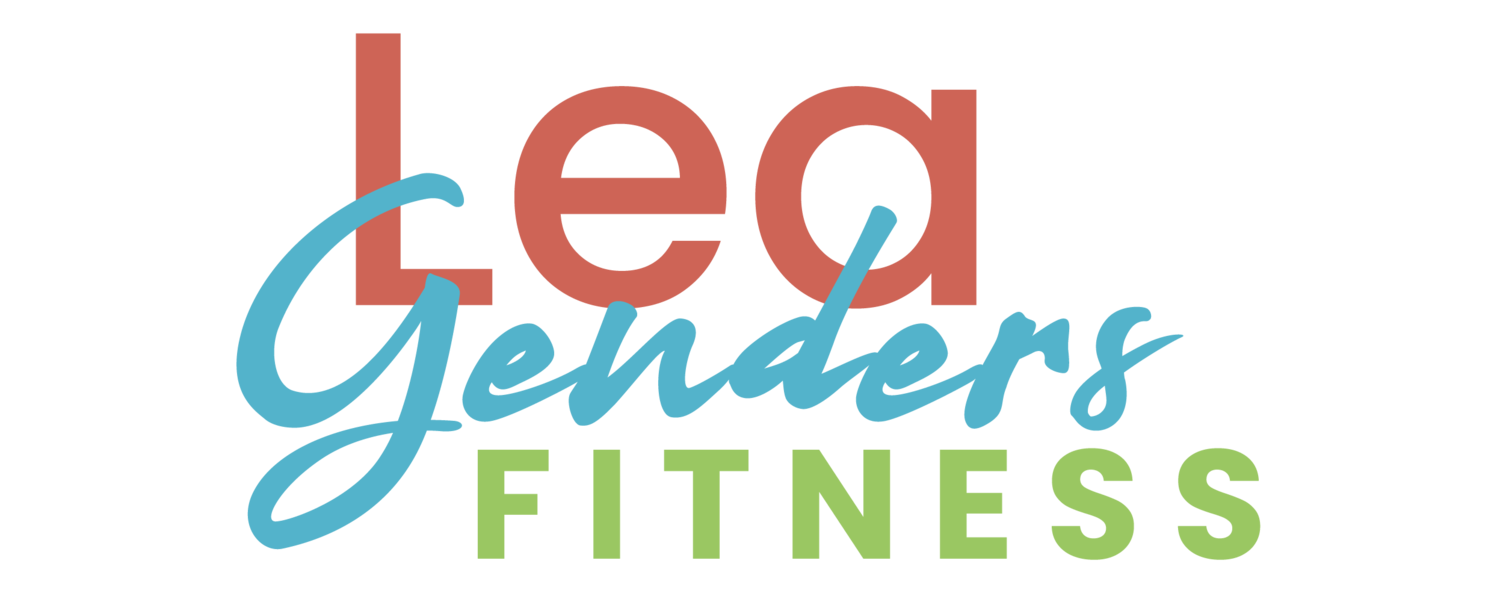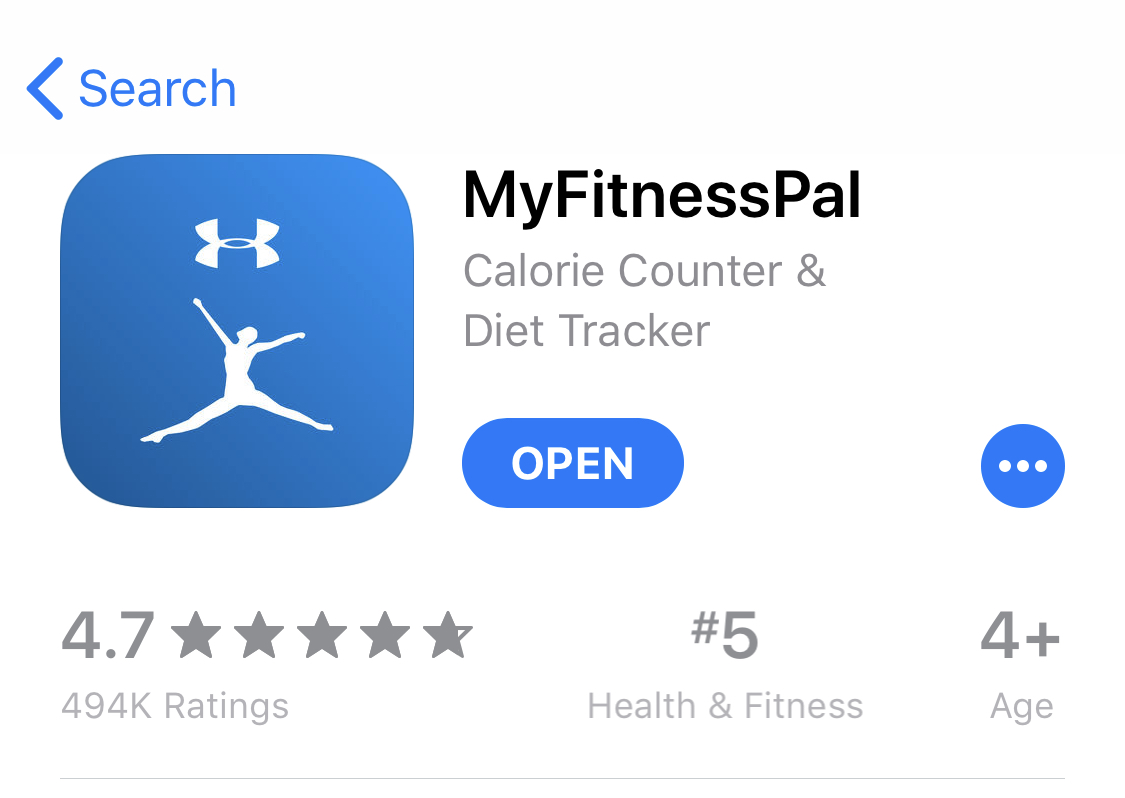I have at least a dozen health and fitness apps on my phone—It’s incredible how technology can make our lives easier! While health apps are fantastic tools that you can use to help reach your goals, be aware of the potential pitfalls of the popular apps. Did you see my post this week on digital wellness?
As a trainer, I want my clients and blog readers to succeed, whether it’s from the workouts we do together, the ones you do on your own, or from the information you receive from me. I encourage you to use all the resources available to you to help you reach your goals; whether it’s from blogs, books, trainers, apps, or classes.
As with most things in life, you can take the good, recognize and discard the bad to get the best results. In this post, I reviewed five popular fitness apps that I use to highlight the best features of each and warn you of the potential pitfalls so you get the most out of the apps that you download.
MY FITNESS PAL
WHY IT’S GREAT:
My Fitness Pal is one of the most popular health apps available, and with good reason. Does anyone remember in the old days when if you wanted to track calories you had to measure everything, write it all down, add everything up, and you know….do math?
Yeah, me either, because I’m too young (that’s a lie). I never bothered to do any of that because it was too cumbersome. Don’t even get me started on calculating macros without an app, and you couldn’t turn to the internet to look up calories in restaurant meals.
Most people, outside of professional bodybuilders, weren’t going to take the time and energy to count calories and macros manually, it was more work than it was worth.
Then the internet was invented, My Fitness Pal came along, and all that math got a bit easier. Now you can scan the barcodes, and the app easily tracks your calories, your macronutrient breakdown, your workouts, water intake, and goal weight! Brilliant!
WHAT TO WATCH FOR:
While there’s no denying that My Fitness Pal is an excellent tool for tracking, keep in mind that the database of foods is user-generated. Be aware of a substantial margin of error. The nutrition facts may not be 100% correct.
You can avoid this by always manually verifying the information against the package or entering the information in yourself. It gets trickier when you search for food without a barcode; you’ll often find multiple options with widely varying calorie counts. We are never going to be exact, but if you’re assuming serving sizes and guessing on the right food to choose in the app, you could be easily be eating a lot more than the app reports, which could affect your results.
Also. some personality-types may get obsessed with tracking. If entering the number of calories you eat starts to take over the majority of your thoughts throughout the day, then it may be best to take a break from tracking altogether. I speak from experience. I monitor for a week or two to get a handle of what I am eating, then go back to estimating. It’s a system that works for me; it allows me to record periodically to stay on track, but not get obsessive about it.
FITBIT
WHY IT’S GREAT:
Fitbit woke us up to how much we weren’t moving! I love my FitBit and the app to keep me motivated to step all day, outside of my exercise. Once I started tracking, I quickly found out that even though I worked out most days, I wasn’t moving around nearly enough. It taught me over the years how to build low-intensity activity throughout my day: parking the farthest away from the front door, taking short hourly walk breaks, and using a bathroom on another floor at work. I’m more aware of my activity (or lack thereof) outside of working out and much healthier for moving around so much more.
WHAT TO WATCH FOR:
Take the calorie burned numbers on your Fitbit app with a grain of salt. They are estimates and likely over-estimated. If you have a FitBit with a heart-rate monitor, it may be slightly more accurate, but even then, these numbers are calculated on an algorithm, using estimates and averages. If you eat to the calories burned on your Fitbit App, you could be over-consuming calories.
Instead pay attention to hunger cues, eat a little less on days that you move less, and a little more (if needed) on days that you move more. Just like the calories burned number on the treadmill at the gym; you can't trust the Fitbit calorie burned numbers as fact.
NIKE TRAINING CLUB (NTC)
WHY IT’S GREAT:
NTC is one of the best workout apps out there today. I love you can choose based on the muscle you want to work, by workout type, by fitness level, and by the equipment you have available. The app has a voice-guided coach and videos to follow along. There are probably 100s of workouts, with a lot of fresh exercise ideas no matter your fitness level.
WHAT TO WATCH OUT FOR:
The downside to workout apps, like Nike training club, is they usually don’t take progressive overload into account. Workout results come from progressively improving, either by lifting heavier weights as you get stronger, or increasing the number of reps, or the number of sets and by manipulating the rest periods.
If you do the same workouts over and over, or randomly choose different workouts each day, you’ll likely see initial results, but then will plateau. You must increase the load or intensity as you get stronger to see results. Since our body adapts to the demands we place upon it (this is good, this is how we get stronger) we must continually challenge ourselves in new ways to see results over time. If you follow the same workouts over and over from an app, or choose arbitrary exercises without your goals in mind, your results will plateau.
STRAVA
WHY IT’S GREAT:
Of all the running apps that I’ve tried over the years, Strava is hands-down, my favorite. It’s community-based, so you can add all your running friends to get motivated by their speedy workouts, give kudos to friends for great workouts, and comment on friend’s activities. It’s a social network for runners! It connects to your devices (phone, GPS watch) to track all your performance metrics, and you can even compete virtually to gain a top spot on the leaderboard of your favorite running route!
WHAT TO WATCH OUT FOR:
While I love Strava and competition can be motivating, be careful not to let your competitive nature control your running plan. As a running coach, I can tell you it’s essential that every run is not a fast one. We need slow runs to round out our training plan (most of our runs should be conversational-pace). If we run our fastest every day to ensure we share impressive stats with all our friends, the only thing we gain is a potential for injury.
Don’t let the social pressure to run fast ruin your training plan. If you don’t want your friends to see your slow days, disconnect the app, but I promise, no one else cares about your pace as much as you do.
BODYSPACE
WHY IT’S GREAT:
I saved my favorite app for last. BodySpace may not be as as popular as the apps listed above, but I love it to track my weight lifting. If you’re not tracking your weights, reps, and sets, it’s next to impossible to make sure you’re always improving. You can’t memorize your every workout (unless it is unchanging, and we already discussed the problem with that) so an app to track your lifts is helpful to make sure you're always progressing.
My favorite feature is that at the end of each set it shows a graph of your recent workouts and highlights your best set. Every week, I try to improve my best set for each exercise in some way, either by increasing the weight, the reps, or the number of complete sets in some small way, even just by two pounds or two reps. It ensures I am always progressing forward, the most crucial factor in seeing results.
WHAT TO WATCH OUT FOR:
In BodySpace you can choose from pre-built programs in the app or build your own. I create my own based on my programming, but every exercise I do is not in the app, so sometimes I choose a similar exercise in the app as a placeholder and then do the one I had planned (annoying).
My BodySpace also has a community aspect, but I have very few friends (introvert alert), and I randomly get creepy friend requests from meatheads. #ignoreanddelete
When following a program on BodySpace keep in mind, the app does not consider your individual fitness needs. The app doesn’t know about your high school knee injury or your wonky hip. The program doesn’t know your current fitness abilities, and the program could be more than your joints and tendons can sustain. Blindly following a program in a fitness app can be dangerous if you don’t properly perform the exercises or use incorrect weights for your abilities.
A personal trainer can help make sure you are progressing properly, doing the exercises correctly and that you choose the appropriate workouts for your individual goals. Apps can be extremely convenient, and help us reach our goals, as long as we use them safely and appropriately while applying common sense.
Do you use any of these apps? What’s your favorite health or fitness app? Is there one you can’t live without? I’d love to hear about it. If we are not already “friends” on any of these apps, feel free to look me up!
Did you like this post? Do you know someone who might benefit? It helps me when you share with your friends and followers on Facebook, Twitter or Pinterest.
Questions? I’d love to help.

















We love to blame the scale when we don’t like the number, but the truth is, the scale isn’t the problem—it’s how we think about it. In this post, I’m breaking down why focusing on the number keeps you stuck and how shifting your mindset around the scale can change everything about how you measure progress.